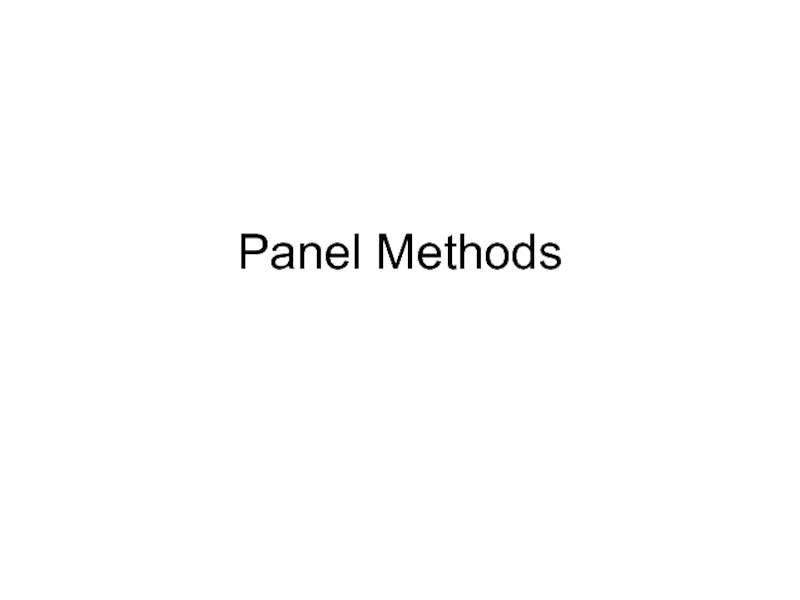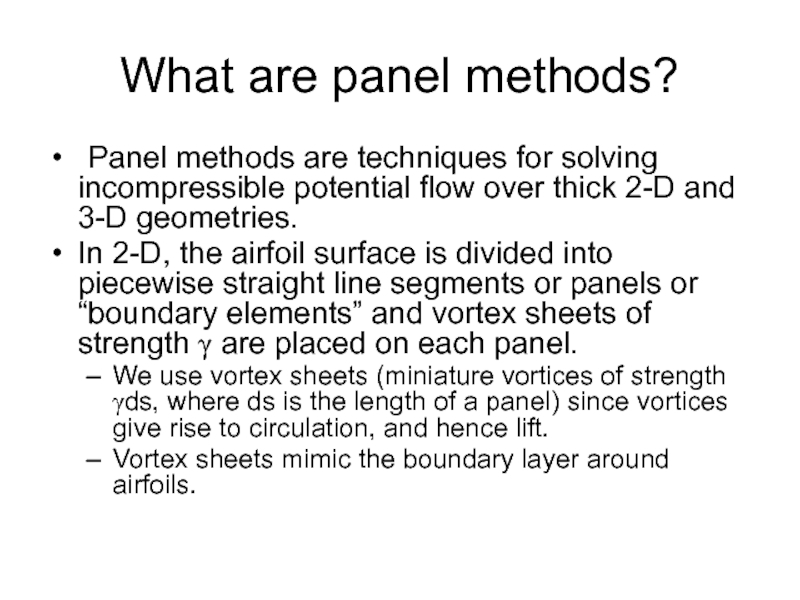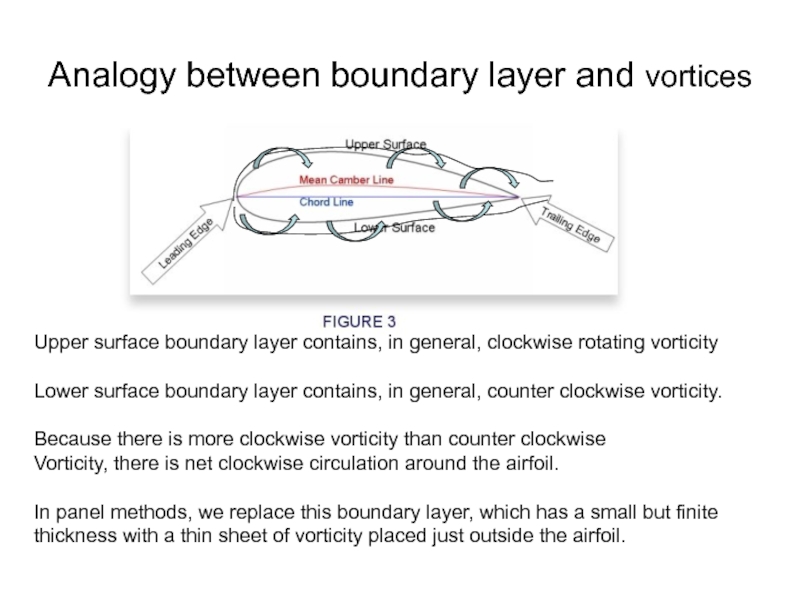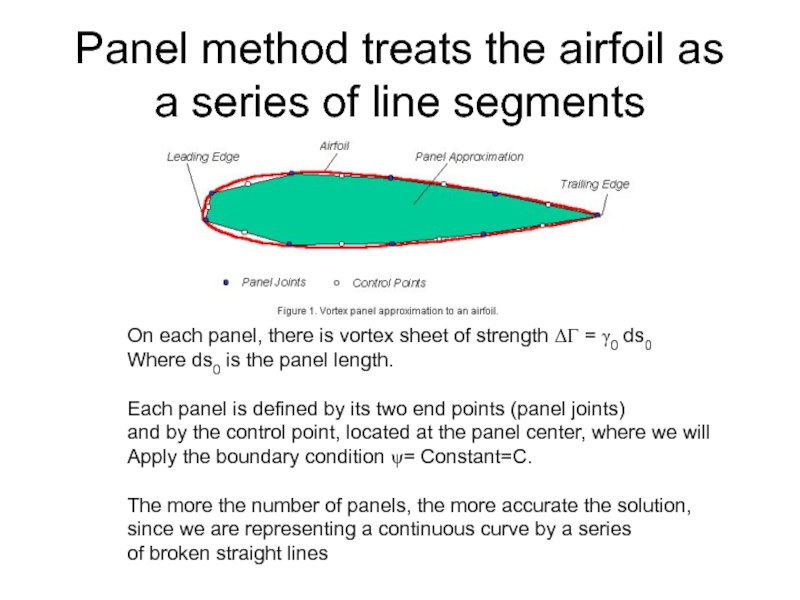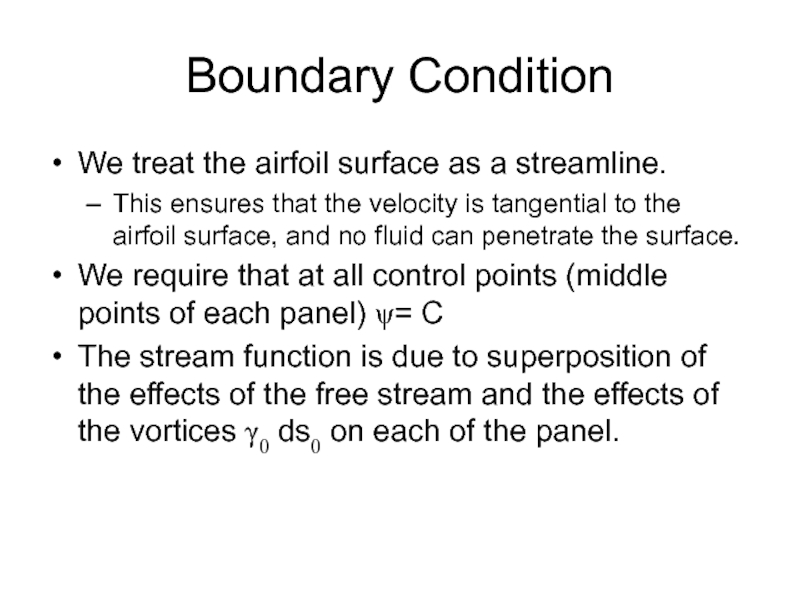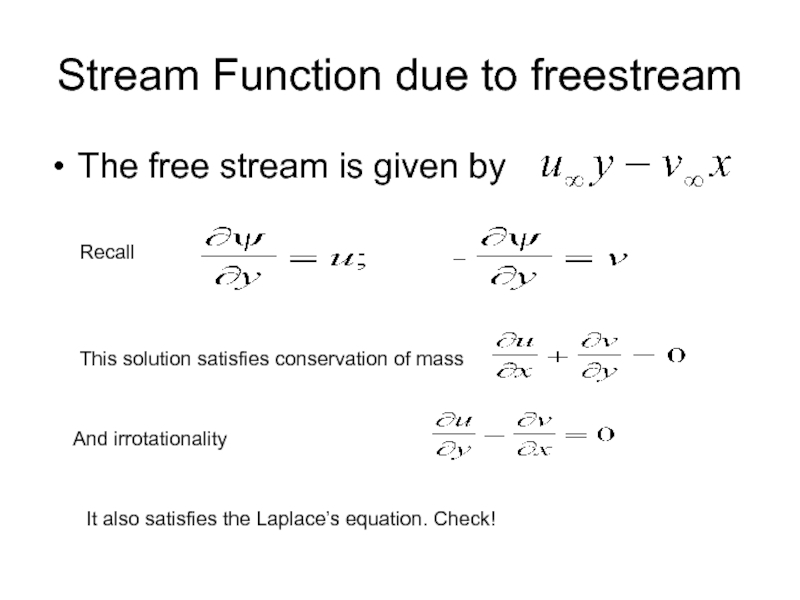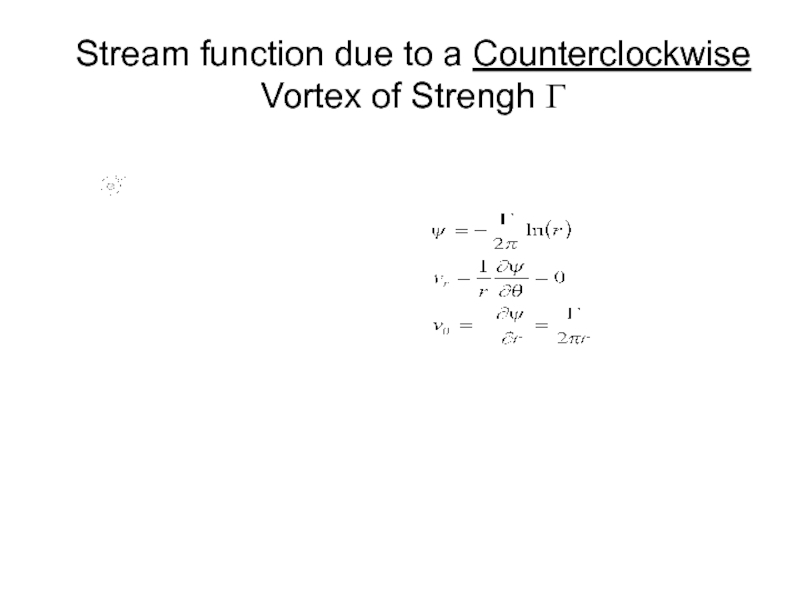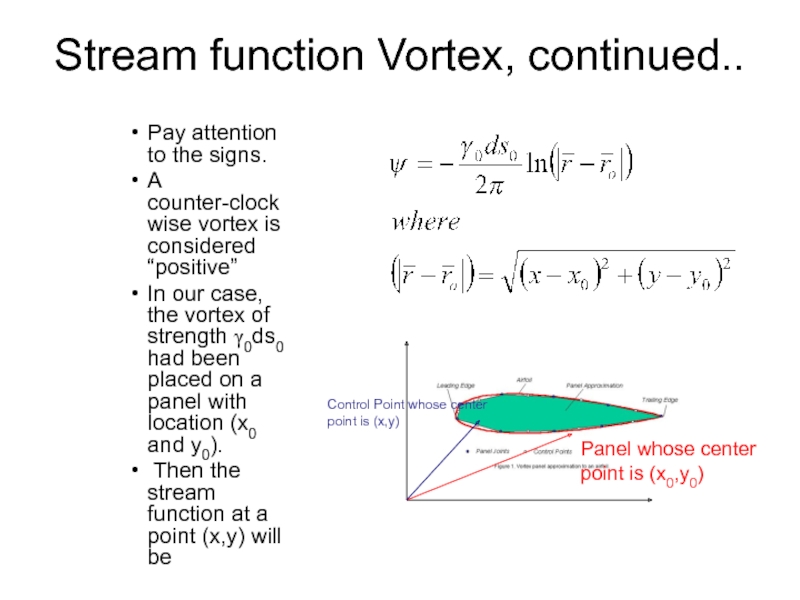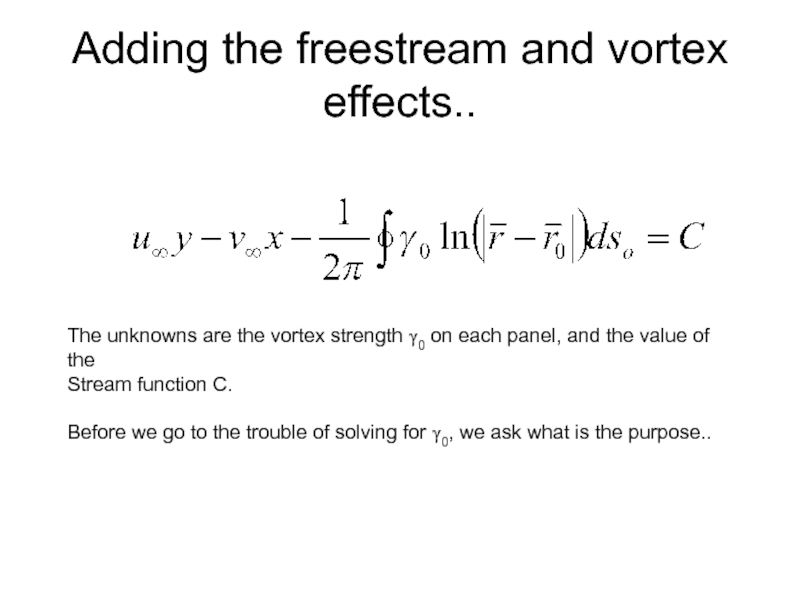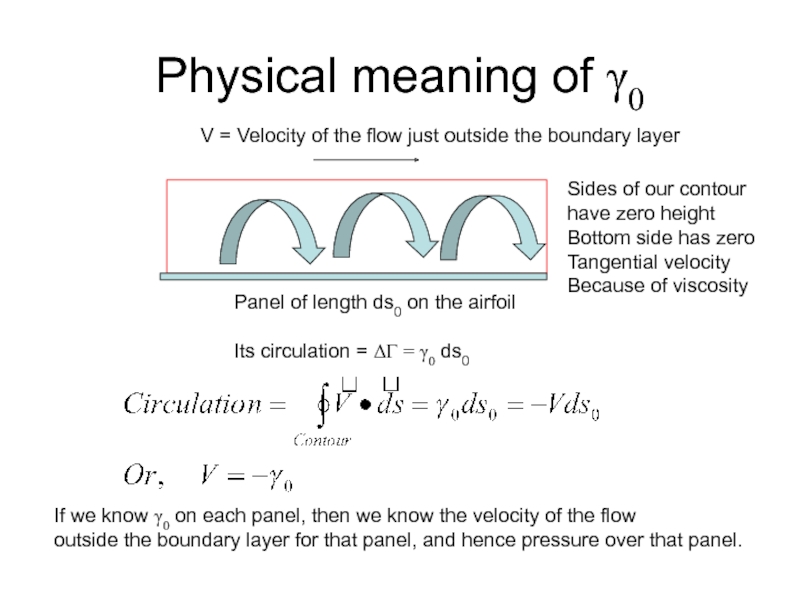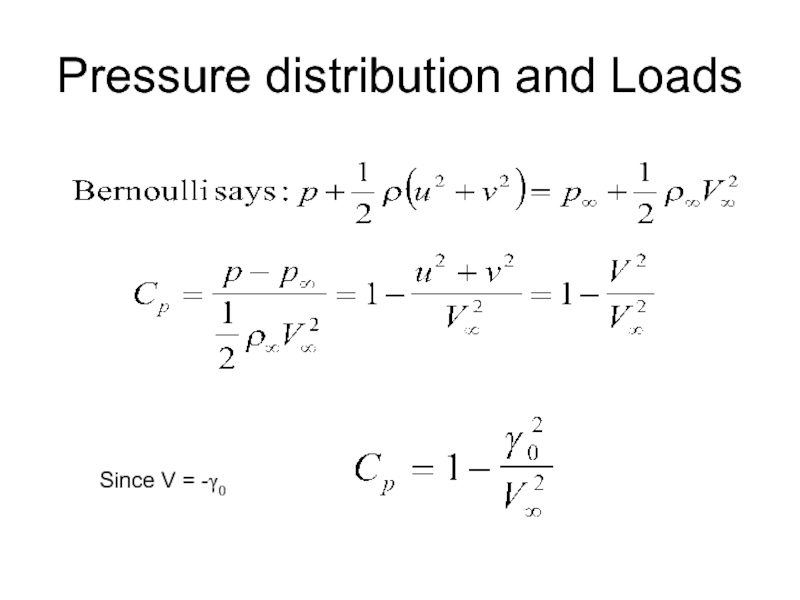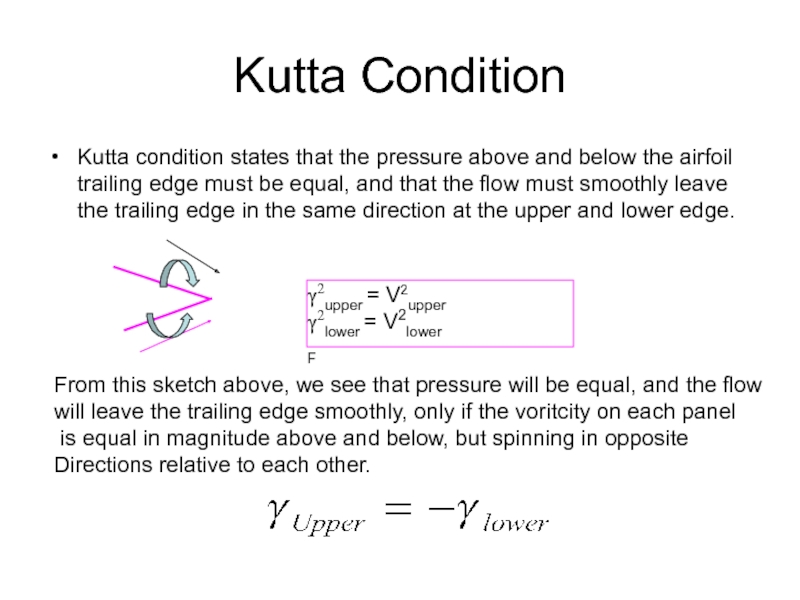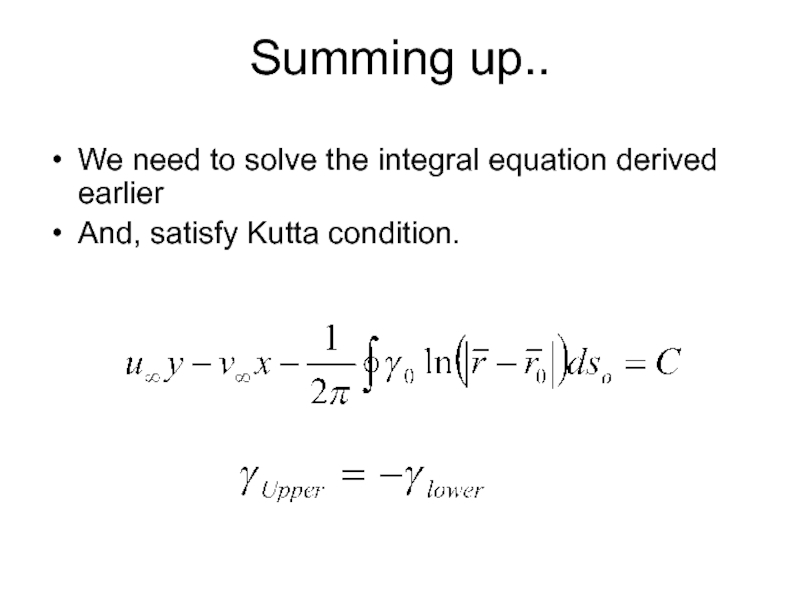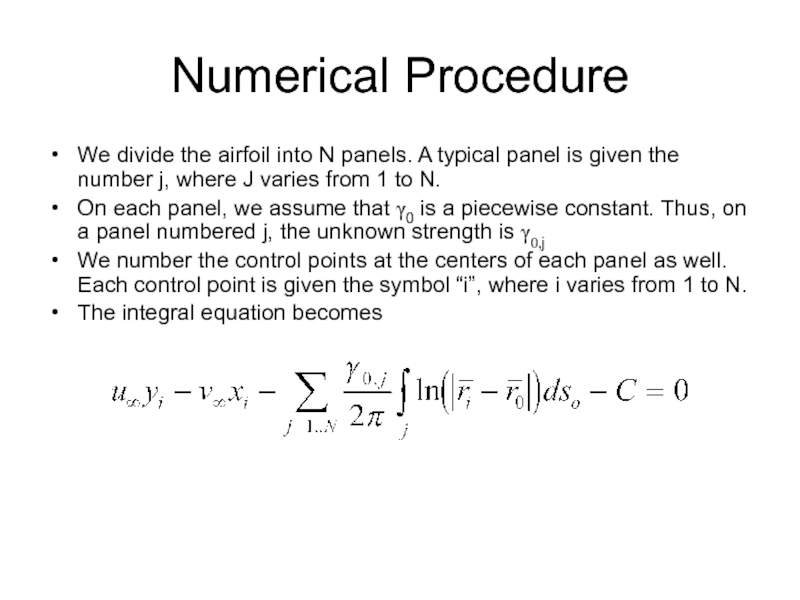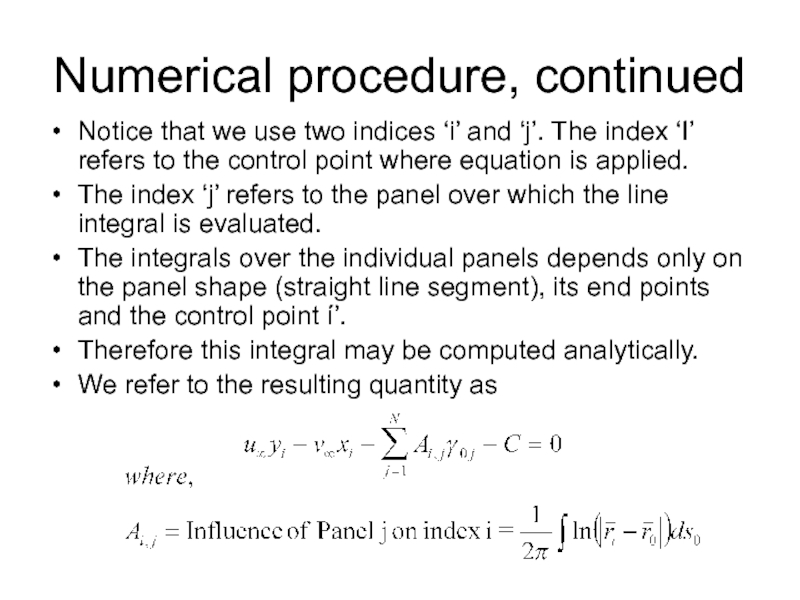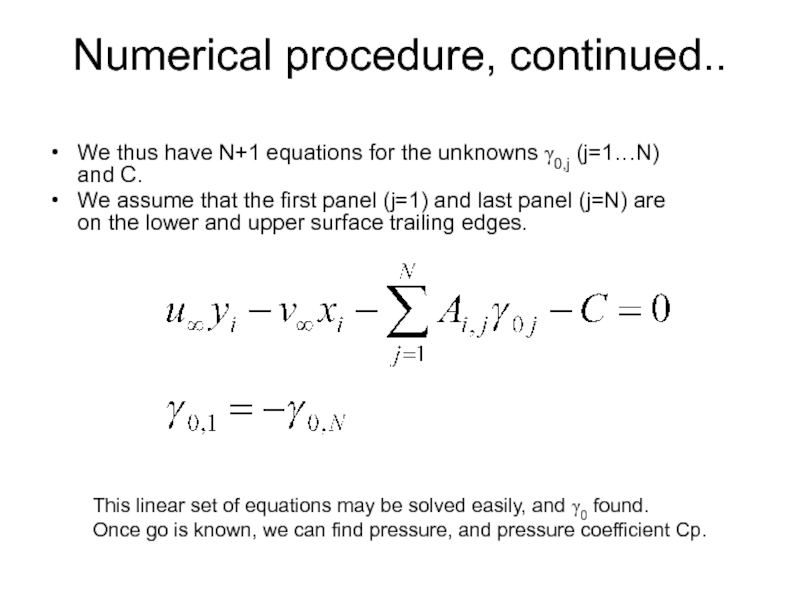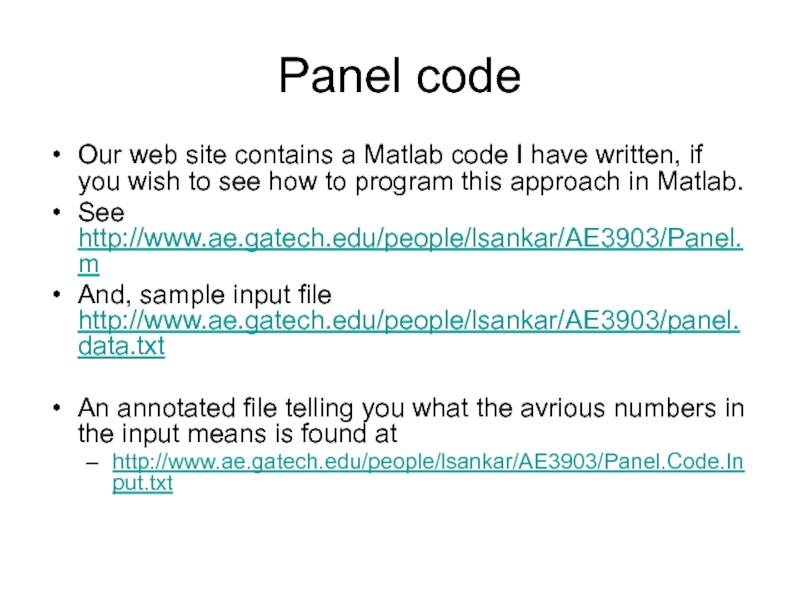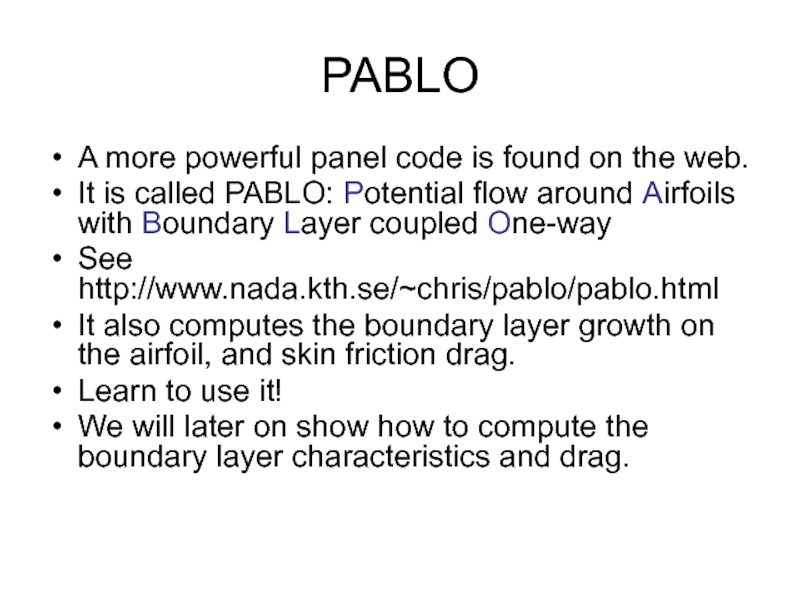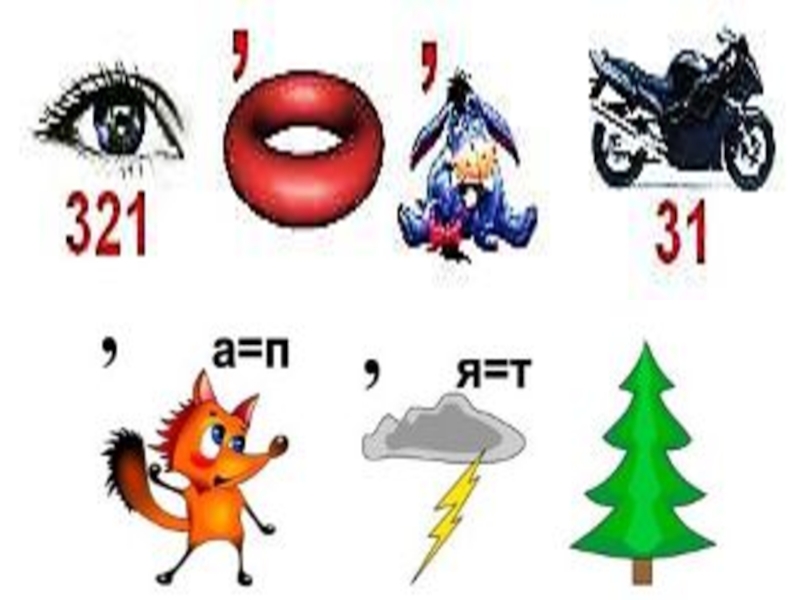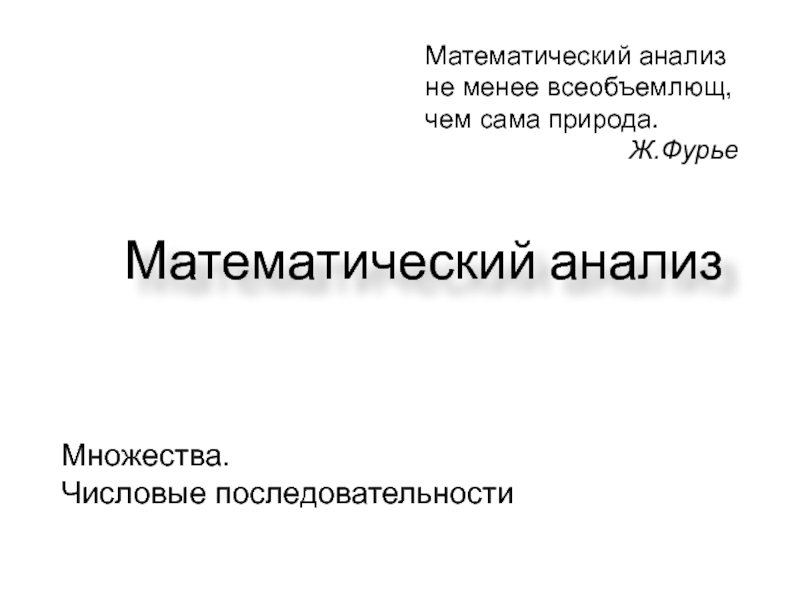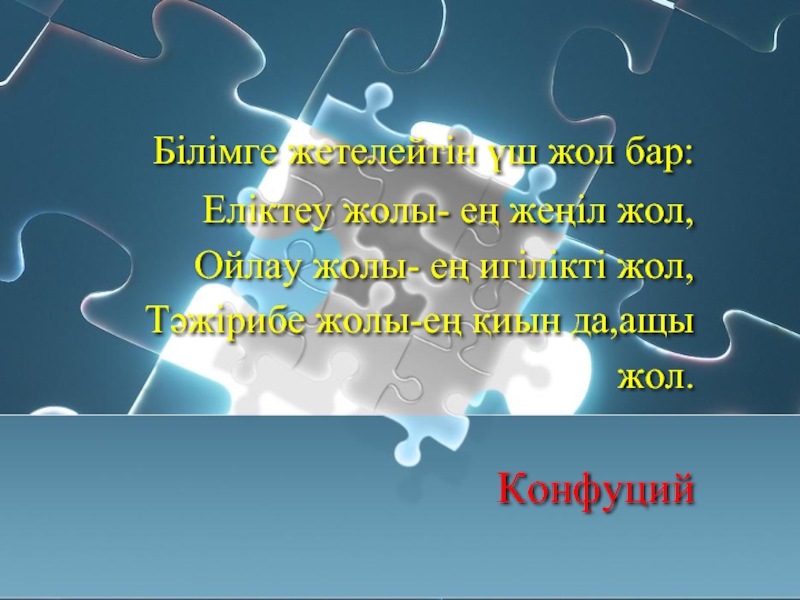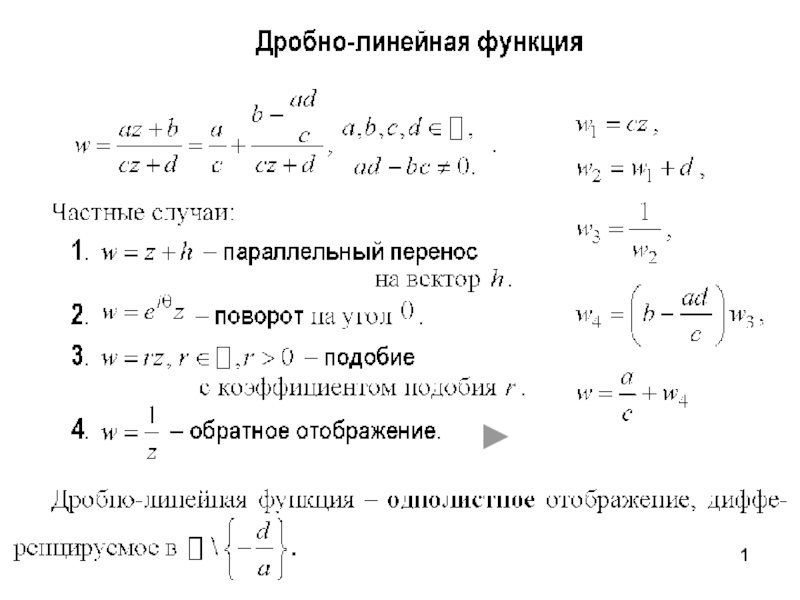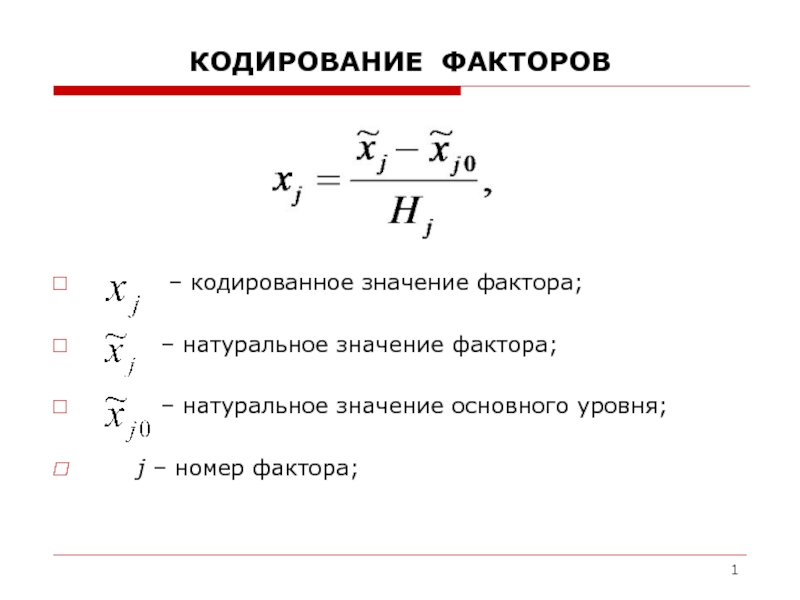- Главная
- Разное
- Дизайн
- Бизнес и предпринимательство
- Аналитика
- Образование
- Развлечения
- Красота и здоровье
- Финансы
- Государство
- Путешествия
- Спорт
- Недвижимость
- Армия
- Графика
- Культурология
- Еда и кулинария
- Лингвистика
- Английский язык
- Астрономия
- Алгебра
- Биология
- География
- Детские презентации
- Информатика
- История
- Литература
- Маркетинг
- Математика
- Медицина
- Менеджмент
- Музыка
- МХК
- Немецкий язык
- ОБЖ
- Обществознание
- Окружающий мир
- Педагогика
- Русский язык
- Технология
- Физика
- Философия
- Химия
- Шаблоны, картинки для презентаций
- Экология
- Экономика
- Юриспруденция
Panel.Methods презентация
Содержание
- 1. Panel.Methods
- 2. What are panel methods? Panel methods are
- 3. Analogy between boundary layer and vortices
- 4. Panel method treats the airfoil as a
- 5. Boundary Condition We treat the airfoil surface
- 6. Stream Function due to freestream The free
- 7. Stream function due to a Counterclockwise Vortex of Strengh Γ
- 8. Stream function Vortex, continued.. Pay attention to
- 9. Superposition of All Vortices on all Panels
- 10. Adding the freestream and vortex effects..
- 11. Physical meaning of γ0 Panel of length
- 12. Pressure distribution and Loads Since V = -γ0
- 13. Kutta Condition Kutta condition states that the
- 14. Summing up.. We need to solve the integral equation derived earlier And, satisfy Kutta condition.
- 15. Numerical Procedure We divide the airfoil into
- 16. Numerical procedure, continued Notice that we use
- 17. Numerical procedure, continued.. We thus have N+1
- 18. Panel code Our web site contains a
- 19. PABLO A more powerful panel code is
Слайд 2What are panel methods?
Panel methods are techniques for solving incompressible potential
In 2-D, the airfoil surface is divided into piecewise straight line segments or panels or “boundary elements” and vortex sheets of strength γ are placed on each panel.
We use vortex sheets (miniature vortices of strength γds, where ds is the length of a panel) since vortices give rise to circulation, and hence lift.
Vortex sheets mimic the boundary layer around airfoils.
Слайд 3Analogy between boundary layer and vortices
Upper surface boundary layer contains, in
Lower surface boundary layer contains, in general, counter clockwise vorticity.
Because there is more clockwise vorticity than counter clockwise
Vorticity, there is net clockwise circulation around the airfoil.
In panel methods, we replace this boundary layer, which has a small but finite thickness with a thin sheet of vorticity placed just outside the airfoil.
Слайд 4Panel method treats the airfoil as
a series of line segments
On each
Where ds0 is the panel length.
Each panel is defined by its two end points (panel joints)
and by the control point, located at the panel center, where we will
Apply the boundary condition ψ= Constant=C.
The more the number of panels, the more accurate the solution,
since we are representing a continuous curve by a series
of broken straight lines
Слайд 5Boundary Condition
We treat the airfoil surface as a streamline.
This ensures that
We require that at all control points (middle points of each panel) ψ= C
The stream function is due to superposition of the effects of the free stream and the effects of the vortices γ0 ds0 on each of the panel.
Слайд 6Stream Function due to freestream
The free stream is given by
Recall
This solution satisfies conservation of mass
And irrotationality
It also satisfies the Laplace’s equation. Check!
Слайд 8Stream function Vortex, continued..
Pay attention to the signs.
A counter-clockwise vortex is
In our case, the vortex of strength γ0ds0 had been placed on a panel with location (x0 and y0).
Then the stream function at a point (x,y) will be
Panel whose center
point is (x0,y0)
Control Point whose center
point is (x,y)
Слайд 9Superposition of All Vortices on all Panels
In the panel method we
Then, the stream function due to all such infinitesimal vortices at the control point (located in the middle of each panel) may be written as the interval below, where the integral is done over all the vortex elements on the airfoil surface.
Слайд 10Adding the freestream and vortex effects..
The unknowns are the vortex strength
Stream function C.
Before we go to the trouble of solving for γ0, we ask what is the purpose..
Слайд 11Physical meaning of γ0
Panel of length ds0 on the airfoil
Its circulation
V = Velocity of the flow just outside the boundary layer
If we know γ0 on each panel, then we know the velocity of the flow
outside the boundary layer for that panel, and hence pressure over that panel.
Sides of our contour
have zero height
Bottom side has zero
Tangential velocity
Because of viscosity
Слайд 13Kutta Condition
Kutta condition states that the pressure above and below the
γ2upper = V2upper
γ2lower = V2lower
F
From this sketch above, we see that pressure will be equal, and the flow
will leave the trailing edge smoothly, only if the voritcity on each panel
is equal in magnitude above and below, but spinning in opposite
Directions relative to each other.
Слайд 14Summing up..
We need to solve the integral equation derived earlier
And, satisfy
Слайд 15Numerical Procedure
We divide the airfoil into N panels. A typical panel
On each panel, we assume that γ0 is a piecewise constant. Thus, on a panel numbered j, the unknown strength is γ0,j
We number the control points at the centers of each panel as well. Each control point is given the symbol “i”, where i varies from 1 to N.
The integral equation becomes
Слайд 16Numerical procedure, continued
Notice that we use two indices ‘i’ and ‘j’.
The index ‘j’ refers to the panel over which the line integral is evaluated.
The integrals over the individual panels depends only on the panel shape (straight line segment), its end points and the control point í’.
Therefore this integral may be computed analytically.
We refer to the resulting quantity as
Слайд 17Numerical procedure, continued..
We thus have N+1 equations for the unknowns γ0,j
We assume that the first panel (j=1) and last panel (j=N) are on the lower and upper surface trailing edges.
This linear set of equations may be solved easily, and γ0 found.
Once go is known, we can find pressure, and pressure coefficient Cp.
Слайд 18Panel code
Our web site contains a Matlab code I have written,
See http://www.ae.gatech.edu/people/lsankar/AE3903/Panel.m
And, sample input file http://www.ae.gatech.edu/people/lsankar/AE3903/panel.data.txt
An annotated file telling you what the avrious numbers in the input means is found at
http://www.ae.gatech.edu/people/lsankar/AE3903/Panel.Code.Input.txt
Слайд 19PABLO
A more powerful panel code is found on the web.
It
See http://www.nada.kth.se/~chris/pablo/pablo.html
It also computes the boundary layer growth on the airfoil, and skin friction drag.
Learn to use it!
We will later on show how to compute the boundary layer characteristics and drag.
